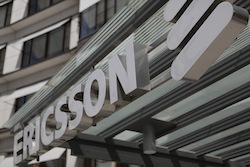Next month, Ericsson will find itself in an unusual battle, competing not with rival vendors but with cement manufacturers and drug makers.
Eight of the vendor’s researchers have been nominated for the European Patent Office’s European Inventor Award for their “decisive role” in the invention of LTE network technology. Polling for the Popular Prize, which elects a winner by public vote, started today.
Fifteen companies are nominated in total across five categories, with shortlisted organisations also including the likes of chemists producing low cost water filters and the makers of a rapid DNA test.
Ericsson is slugging it out in the industry category against researchers at Italian cement maker Italcementi and a Belgian-French team at Janssen Pharmaceutica.
Erik Dahlman is one of Ericsson’s eight shortlisted researchers along with Stefan Parkvall, Muhammad Kazmi, Robert Baldemair, George Jöngren, Henning Wiemann, Johan Torsner and Magnus Stattin. He is somewhat lost for words when asked why his company was nominated ahead of the numerous enterprises working together to develop 4G LTE.
“Fundamentally I don’t know whether we did anything differently to others. Our key strength was due to the focus we had in this area across the business,” he tells Mobile Europe. “We really saw the big picture. We knew it was not enough to solve a specific problem but make sure they all fitted together in the end.”
For Ericsson, work began in 2002 with a small team of around six working on internal research, a drop in the ocean compared to the 25,000 employees in the vendor’s R&D department. Talks began with other companies about standardisation began in 2004, with deep research kicking off in 2005.
By 2009, Ericsson was one of the first vendors to build a commercialised LTE network, providing Teliasonera’s infrastructure in Stockholm. According to the vendor, half of all LTE smartphone traffic runs on a network built by Ericsson.
Ericsson says it now spends €3.6 billion per year on R&D, with 35,000 granted patents worldwide. The vendor has predicted it will hold a quarter of all “essential” patents in LTE.
Dahlman and his colleagues find out if they have won the award on 19 June at an awards ceremony opened by German Chancellor Angela Merkel in Berlin.
Despite the potential distraction of the nomination, Dahlman’s attention has moved onto 5G which is expected to be deployed in 2020. But what has the vendor learned from its development of 4G?
Dahlman says: “It’s not yet clear what it will achieve. We are more concerned about 5G as a much broader proposition than 4G. 4G was about mobile broadband, high data rates and lower latency.
“When it comes to 5G, it’s a lot of talk about network security, how all kinds of machines should be connected – these are the things that offers new requirements. If we were to make a new mobile broadband technology from scratch, it would not be very different from LTE.”



